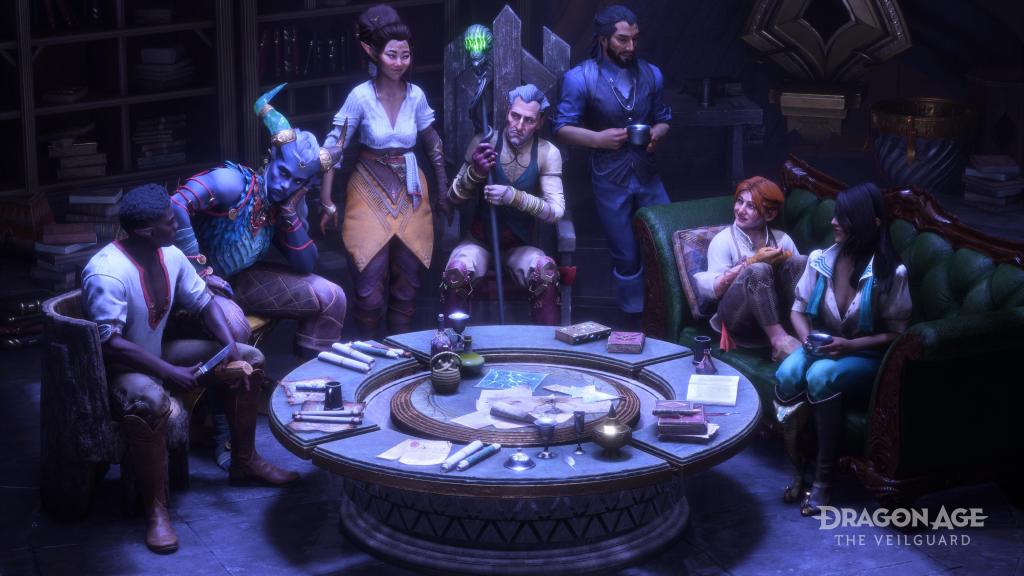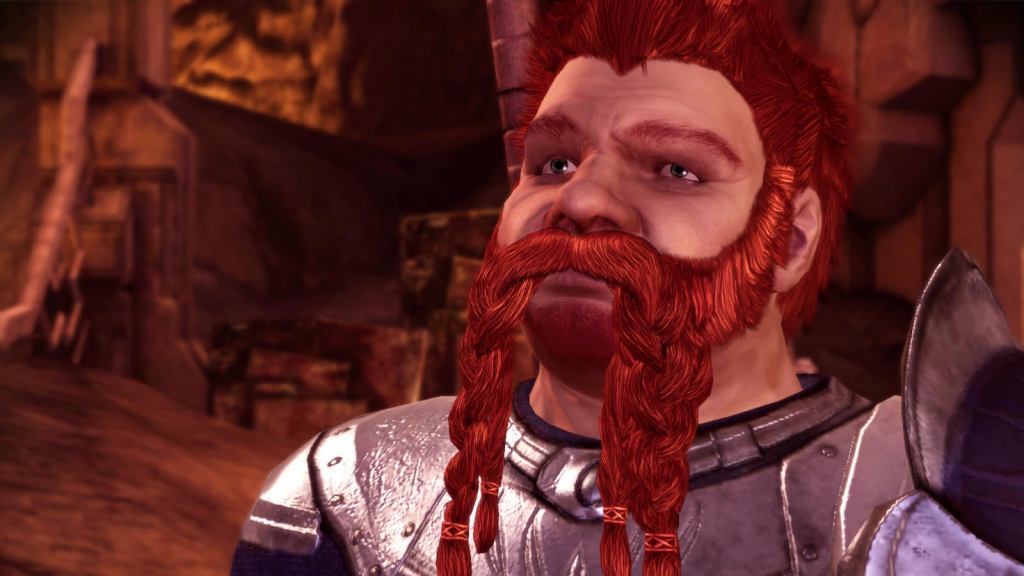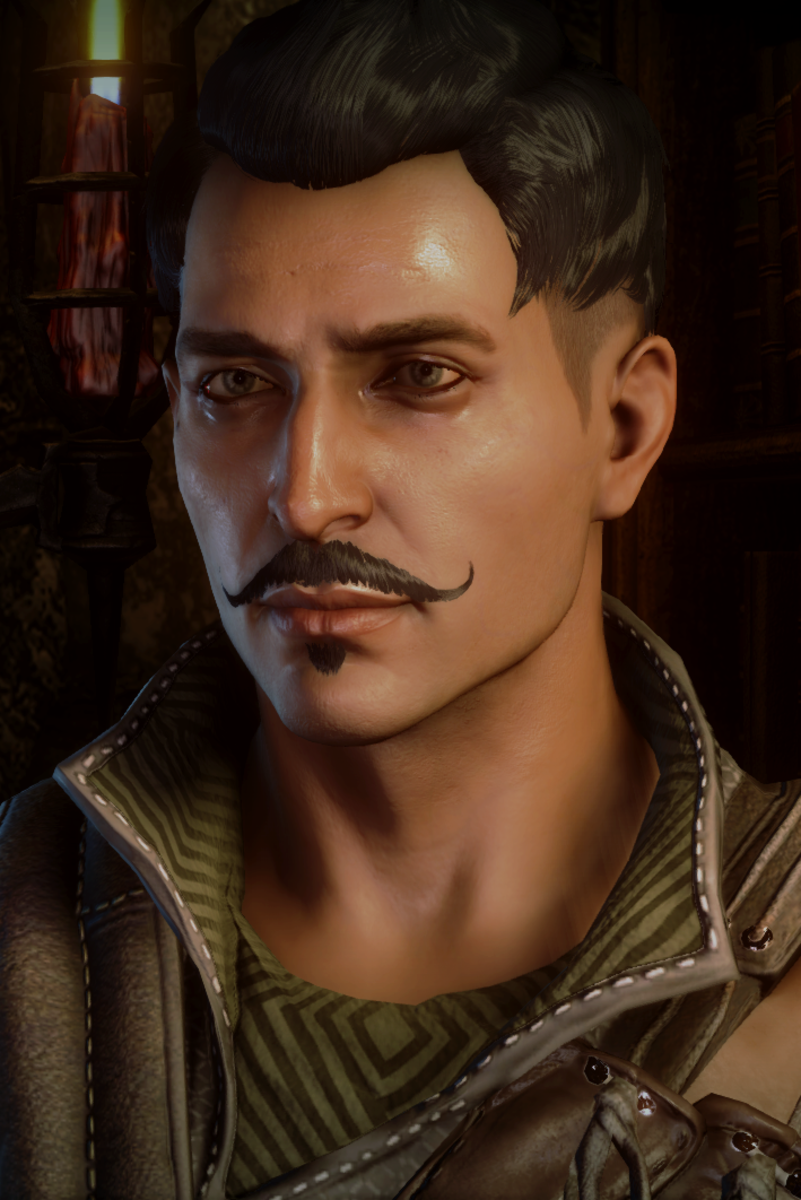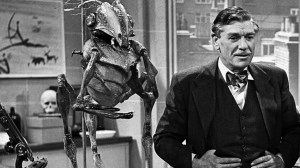After years of silence, concerning reports about the tempestuous state of BioWare, Dragon Age: The Veilguard, the rebranding of the long-in-development Dragon Age: Dreadwolf, was unveiled via its first proper trailer. Where previous teaser trailers, fluffy tone pieces, left fans buried in speculation, this new trailer — the ‘Official Reveal Trailer‘ — gave everyone an actual taste of the final product coming later this year. And for many, it was a sour taste. The RPG a decade in the making was spit out by the Internet, with many pillorying the trailer for its unrecognizable tone, complete with a questionable change in art direction.
Videos by ComicBook.com
It was undeniably a terrible first impression, but luckily for fans it was seemingly a false impression. A couple days later, perhaps telegraphing the Internet’s reaction, BioWare released 20 minutes of gameplay. Some criticisms and concerns persisted, but by and large it was a 180 in public opinion after the gameplay trailer impressed. For 48 hours, it looked dire for Dragon Age: The Veilguard and BioWare, but anticipation was restored. That said, since then, some details about the game have surfaced that are once again rocking the boat.
One of these details is that each companion in the game will be romanceable, which is new for the series. In previous games, there has always been the option to romance companions, but not every companion. No matter how hard players have flirted, they’ve never been able to romance previous characters such as Varric, Sten, Aveline, and Vivienne. Regardless of gender, every companion can be romanced in Dragon Age: The Veilguard. This is not dissimilar to Baldur’s Gate 3, 2023’s massive RPG hit. However, there is a difference in how it is being implemented.
To let players romance every companion, regardless of gender, Larian Studios implemented a “Playersexual” system with BG3. In this system, every companion is attracted to the player character, without regard for gender, race, or anything else. Essentially, every character is pansexual, however, this sexuality is not particularly realized outside of player-character interaction. In other words, it’s not a component of the character – in this case, a companion – but simply exists for the player character’s benefit. There’s a host of critiques of the playersexual system. Perhaps sensing these criticisms, BioWare has gone ahead and said its system is different because every companion is canonically pansexual. To this end, companions not wine and dined by the player can actually romance each other in the game, again with no regard to gender. It remains to be seen how well this system is implemented and realized. In the meantime, the decision has come against some criticism.
Much of the conversation — the criticism and the defense against this criticism — has been driven by comments from David Gaider on the matter. For those that don’t recognize this name, Gaider is one of the creators of Dragon Age, and was the lead writer on the series for the first three games. As of 2016 though, he no longer works at BioWare. That said, as one of the creators of Dragon Age, responsible for its rich lore, fans are naturally interested in what he thinks of the new game, which is also the first free of his direct influence.

Dragon Age Creator David Gaider Weighs In
Taking to social media platform X, Gaider points out that the fandom “is pretty split on romance design.” And social media discourse confirms he’s telling the truth. As Gaider puts it, there are fans who want to romance everyone, and who find it “a slap in the face” when they can’t. And then there are also fans who prefer “characters with more agency.”
“Nothing wrong with either desire, honestly. It all depends on what you want out of your game. We’re not all here for the same reasons, OK?” Gaider said. “The only unfortunate aspect, in my experience, is that these two approaches are more or less diametrically opposed, from a design standpoint. The Dragon Age writers realized, eventually, that as soon as you make a character romanceable it limits the type of character they can be and the types of stories they can tell. They become beholden to their romance arc and their need to, ultimately, be appealing. Why is that a limitation? Because not all character story arcs are defined by being appealing to the player. Even if the appeal of an arc is for a relatively limited audience, the requirement of having appeal inherently restricts the potential stories to a fairly limited band.”
Gaider continues: “It’s why the Dragon Age team, after a discussion during Dragon Age: Inquisition development, eventually decided to keep Varric as non-romanceable. Already I hear some fans groaning in disappointment, even though we did it so as not to *destroy Varric’s character*. You can’t have it both ways, I’m afraid.”
So, what happened within the writing room that has caused BioWare to do a 180 on lessons previously learned? Perhaps it was in part the exit of Gaider, who no doubt left a substantial vacuum of influence behind when he left. Whatever the case, the writing room has clearly had a change of mind. That said, Gaider makes a salient point: in order to make a character romanceable, they need to tick a certain number of boxes of potential preferences and have a substantial level of desirability. That in itself, is a box that limits what type of characters you can create. Some of the best, most memorable characters are not the type of appealing characters you’d want to recreate a scene from The Notebook with.

For example, take Oghren from Dragon Age: Origins. Oghren is one of the least popular characters in the series who sticks out in a cast of largely very appealing characters. He isn’t drop dead gorgeous like many of his counterparts in the game, he’s often crude or reveling in fart jokes, he’s a deadbeat, and many other unsavory things that put him near the bottom of almost every Dragon Age character tier list. He sticks out like a sore thumb in a cast of fan-favorites. He’s a bad person, but a good character. If he had to be salvaged for a romance arc, he’d be a drastically different character and feel less unique in a series full of good-looking characters easy to draw fan art of and name your kids after.
Dorian Pavus
Evoking the name of Oghren is never going to win you a debate, but he’s not the only character who vanishes into thin air under this romance model. One of the most popular characters –one of the best characters –Dorian Pavus is also at odds with this model. The interplay between Dorian and his father would not be possible if he was available to romance to female player characters. One of the most powerful stories in the Dragon Age series would have never been told under The Veilguard model.
This doesn’t mean another compelling story couldn’t have been told in its place, but this hearkens back to the previous point about the limitations of the model. Whether you go the playersexual route or the canonical pansexual route –which, in the practical sense, can play out very similarly –you still have to limit the types of characters you can create to fulfill the romance quota. There are still plenty of characters to create and stories to tell, but there are no doubt storytelling casualties you’d otherwise not have. Every companion being pansexual allows for more flexibility, but this shouldn’t be mistaken for allowing for more options.

Player Agency vs. Character Agency
When every character is romanceable, you are maximizing player agency, but it comes at the cost of character agency. Player agency is integral to video games, especially BioWare games. However, there is a threshold where it becomes detrimental to immersion. Great characters exist independent of the player character, not in service to the player character. When you make every companion romanceable, you are not just eroding away at believability, but you’re stripping every companion of a considerable amount of agency. Characters like Dragon Age: Inquisition’s Vivienne bring balance to a cast desperate to get into your pants. Giving some companions desires and motivations that don’t include falling in love with the hero trying to save the world goes a long way in offering variety and believability. You want the player character to feel a part — a major part — of a larger world and story, but you don’t want the same world and story to feel completely in service to the player character.
To make every companion romanceable, you immediately box yourself in when writing said characters. On top of that, to make them all canonically pansexual so any player character can romance them only shrinks that box. There is still plenty of room left in this box for BioWare to create compelling characters; and they might do just that, but there’s not excactly a surplus of good faith in BioWare after Mass Effect: Andromeda and Anthem, the studio’s most recent outings, both of which were a step down from their predecessors in just about every department, but especially in writing and cast.
More than this, it is odd to see a studio backtrack on previous lessons learned. Gaider notes the writing team agreed after Dragon Age 2 that shoehorning romance arcs, or stripping characters of agency in order to placate the player character’s desires to mash pixels, had a detrimental effect on said characters. At least Dragon Age 2 had some non-romanceable companions though. Dragon Age: The Veilguard has not just dipped back into these waters, but plunged into them by making every single companion not just romanceable but pansexual as well. It could be a step in a new direction, but right now, at this very point, the direction seems backwards.








